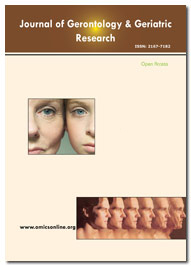ఇండెక్స్ చేయబడింది
- J గేట్ తెరవండి
- జెనామిక్స్ జర్నల్సీక్
- సేఫ్టీలిట్
- RefSeek
- హమ్దార్డ్ విశ్వవిద్యాలయం
- EBSCO AZ
- OCLC- వరల్డ్ క్యాట్
- పబ్లోన్స్
- జెనీవా ఫౌండేషన్ ఫర్ మెడికల్ ఎడ్యుకేషన్ అండ్ రీసెర్చ్
- యూరో పబ్
- గూగుల్ స్కాలర్
ఉపయోగకరమైన లింకులు
ఈ పేజీని భాగస్వామ్యం చేయండి
జర్నల్ ఫ్లైయర్

యాక్సెస్ జర్నల్స్ తెరవండి
- ఆహారం & పోషకాహారం
- ఇంజనీరింగ్
- ఇమ్యునాలజీ & మైక్రోబయాలజీ
- క్లినికల్ సైన్సెస్
- జనరల్ సైన్స్
- జెనెటిక్స్ & మాలిక్యులర్ బయాలజీ
- నర్సింగ్ & హెల్త్ కేర్
- న్యూరోసైన్స్ & సైకాలజీ
- పర్యావరణ శాస్త్రాలు
- ఫార్మాస్యూటికల్ సైన్సెస్
- బయోఇన్ఫర్మేటిక్స్ & సిస్టమ్స్ బయాలజీ
- బయోకెమిస్ట్రీ
- మెటీరియల్స్ సైన్స్
- మెడికల్ సైన్సెస్
- రసాయన శాస్త్రం
- వెటర్నరీ సైన్సెస్
- వ్యవసాయం మరియు ఆక్వాకల్చర్
- వ్యాపార నిర్వహణ
నైరూప్య
Complication Incidence and Management of Adult and Pediatric Moyamoya Disease after Bypass Surgeries
Zhang Q, Feng R, Zhang X, Jiang H, Zhu Y, Yingying G, Xu C, Yuxiang G and Yibing S
Background: Multiple literatures have shown that extra-intracranial vascular direct bypass provides good outcome for patients diagnosed as moyamoya disease (MMD), but complications occurred frequently after surgeries. This study aims to discuss the postoperative complications, occurrence rate and postoperative management of MMD patients who underwent surgeries.
Materials and Methods: We retrospectively collected data of consecutive patients diagnosed with MMD and then underwent combination surgery of direct bypass and EDMS in our department between Jan 2013 to Dec 2015. Postoperative complications include acute brain infarction, intracranial bleeding and CHS. All patients were strictly monitored to avoid hypovolemia, low blood pressure and anemia after surgeries. Edaravone was the main medicine used for postoperative treatment.
Results: Totally 368 consecutive patients (408 hemispheres) are included. The most frequent complication was CHS-related neurological deficits which were observed in 73 patients (19.8%). The most frequently occurred deficits was aphasia (88.5%). There were more left sided surgeries in the CHS plus brain infarction group (76.9% vs. 49.7%, p<0.05). Furthermore, CHS and brain infaction seemed to occur more frequently in adult patients (21.3%) when compared to pediatric patients (16.7%), but not significantly (p>0.05).
Discussion: Incidence of CHS is higher in left lateralization surgeries than right lateralization, and aphasia is the most frequent CHS symptom. Adult patients seem at higher risk for postoperative hyper-perfusion than pediatric patients, but not statistically significant in our study. It is important to observe CHS correctly and timely for neurosurgical nurses, in order to manage it properly.